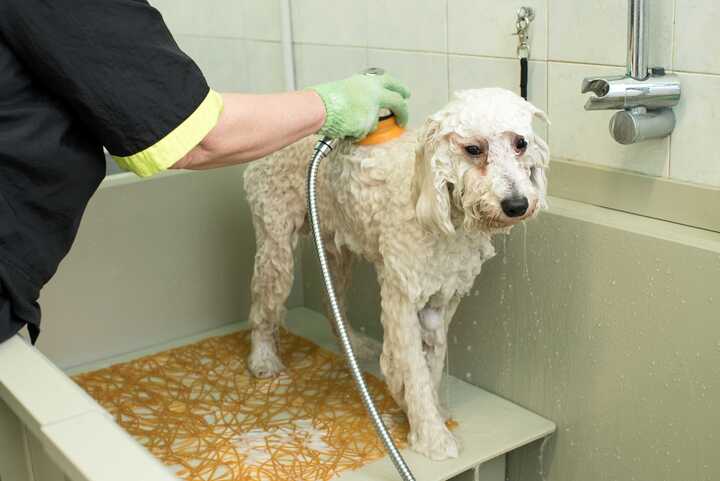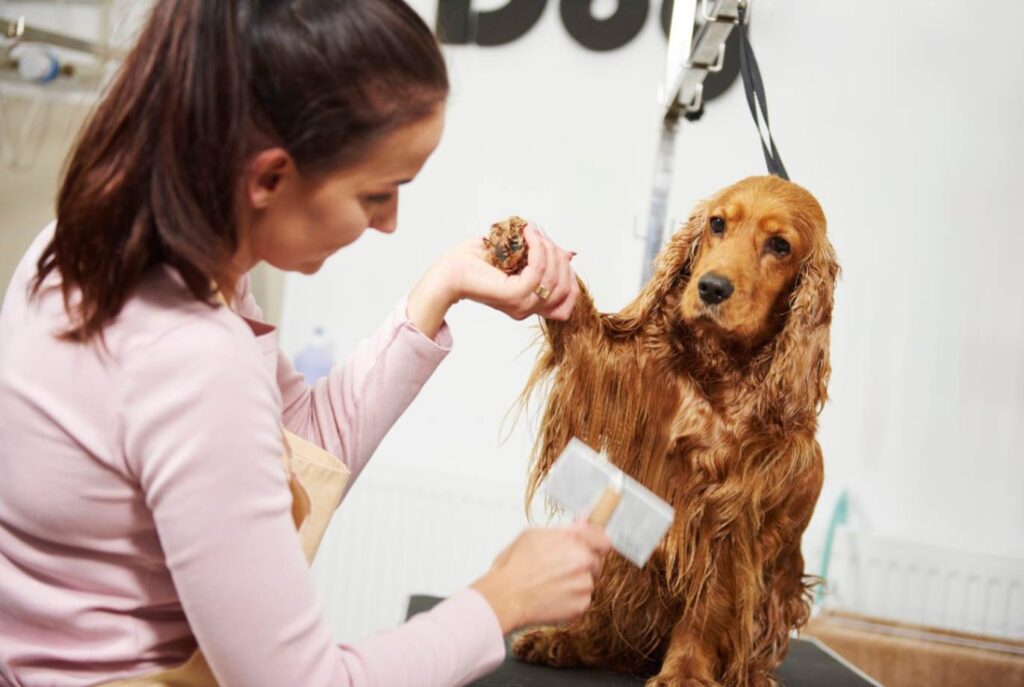Our pets fill our lives with happiness, adventure, and fun. And for that, they deserve the best care and attention in return. Pet grooming is one of the most significant ways to care for our pets. It is essential for their health, as well as their pawtastic style. While going to a professional pet groomer is always the best idea, pet parents can give DIY pet grooming a shot. DIY pet grooming can be fun for you and your pet, but you must know how to do it right. Here are some tips that will help you make DIY grooming an unforgettable experience.

Tips for Successful DIY Pet Grooming
Let’s look at some suggestions and tactics for making your DIY grooming sessions a successful and fun experience:
- Begin Early and Be Patient
Introducing young pets to grooming is one of the most essential DIY tips. It helps parents familiarize their pets with grooming for a smooth and hassle-free future session. Affordable pet groomers tell pet parents to be patient with their pets and reward them for their excellent behavior during the grooming.
Providing positive reinforcement and a safer environment ensures that they have a positive outlook toward grooming. This technique keeps pets well-groomed and improves their bond with their parent. Grooming eventually becomes an activity that the pet and the parent can enjoy together.
- Prepare Your Pet and the Grooming Space
Before grooming your pet, brush it gently. This helps remove knots and stray hair that can cause discomfort during grooming sessions. Brushing away knots helps your pet get comfortable and prepared for the grooming session. After that, gather all the necessary grooming supplies.
Once you have done this, look for a comfortable grooming spot. Choose a well-lit, ventilated place with enough space for your pet to roam comfortably. Professional dog salons say a well-lit grooming spot will let you see what you’re doing correctly, and sufficient ventilation will keep the room fresh and comfortable for you and your pet.
- Bathing
Before you wash your pet, ensure the water is at the appropriate temperature. Professional pet groomers recommend using water at the right temperature; if the water is too hot or cold, the pet can get sick, or the whole grooming session can be jarring. The first step of bathing your pet is wetting them, which helps remove dirt or loose hair.
Use a shampoo suitable for your pet and lather it gently. Wash your pet thoroughly, removing the soap, dirt, and loose fur. Proper rinsing removes shampoo residues, which can cause skin irritations or infection.

- Brushing Your Pet’s Coat
Brushing your pet’s coat frequently should be essential to your pet care routine. It has several advantages, from cleaning your pet’s coat to spreading natural oil. It keeps their coat healthy, making it shiny and tangle-free. However, be gentle while brushing the coat. Brushing aggressively can cause discomfort and hurt your pet’s skin.
Brushing your pet’s coat is an excellent idea. This significantly improves your pet’s physical health and strengthens your bond with your furry bestie. Brushing is a simple activity that helps pets be healthy and enjoy life.
- Drying
After bathing your pet, dry them properly to avoid any skin infections. Begin by patting your pet dry with towels to remove as much moisture as possible. This helps eliminate extra water from their coats, which can lead to strong smells or infections. If you use a hair dryer, keep it safe from your pet and set it to low heat. High heat may be too much for their sensitive skin. Choosing a lower temperature reduces the danger of burns or pain. Additionally, maintain a mild airflow to prevent frightening your pet with unexpected bursts of air.
- Nail Trimming
Experienced pet groomers suggest pet parents take great care while trimming their pet’s nails. You must cut small bits at a time to avoid hurting your pet’s nail bed or paws. Cutting quickly can lead to bleeding, making the pet afraid of future grooming sessions. If you’re unsure about trimming your pet’s nails, see a veterinarian or a professional groomer.
- Dental Treatment
Brushing your pet’s teeth regularly is essential for oral health and avoiding dental problems. When trying to brush your pet’s teeth, start gently by inserting a finger brush or toothbrush designed specifically for pets. Choose a pet-friendly toothpaste that will not cause any side effects in case of consumption. Brushing reduces plaque and tartar accumulation, which lowers the risk of gum disease and tooth decay. Aim for daily brushing sessions, but even a few times per week may significantly impact your pet’s dental health and overall well-being.
- Be Mindful of Sensitive Areas
According to professional pet grooming experts, delicate areas like the ears, eyes, and paws require careful attention. These are delicate places, and harsh handling can cause your pet pain or injury. Avoid exerting too much pressure or making sudden movements that may shock or cause discomfort to your pet. Instead, gently touch and slow, deliberate strokes to keep your pet safe and happy during grooming.
- Professional Assistance
While DIY puppy grooming is cost-effective and handy, there are situations when professional assistance is preferable. Consult a professional groomer or veterinarian if your pet has a complicated coat, skin problems, or behavioral issues while being groomed.
Grooming Considerations for Certain Breeds
Grooming requirements differ between breeds. Consider the following breed-specific considerations:
Long-Haired Breeds
According to professional dog salons, grooming routines vary with different breeds. Long-haired breeds require regular grooming, including daily brushing, to prevent matting. They also need to bathe regularly and trim around the eyes and paws.
Short-Haired Dogs
Short-haired breeds, like Beagles and Boxers, require less care and grooming. Brushing and bathing regularly will help maintain their coat health. You can schedule a grooming session once you notice dirt in their coat.
Dogs With Two Coats
Huskies and German Shepherds have a thick undercoat. Brushing regularly is vital for reducing shedding, especially during shedding seasons. Pets with double coats require extra puppy grooming and care during the shedding season.
Curly-Haired Dogs
Breeds with curly coats, such as the Poodle or Bichon Frise, require frequent brushing to prevent matting. Professional clipping may be necessary to keep their signature styles.
Cats
Cats are typically adept groomers, but brushing on a regular basis can help minimize shedding and hairballs. Handle their delicate ears and paws with care. Groomers suggest pet parents handle their curly-haired pets with extra care.
The Bottom Line
DIY pet grooming at home may be a fun experience for you and your pet. You can meet your pet’s grooming needs while improving your relationship with the correct equipment, skills, and patience. Remember to emphasize your pet’s comfort and well-being, and seek professional advice when in doubt. By attending to your pet’s grooming requirements, you keep them clean and healthy and offer them the love and attention they need. So, take your brushes and clippers and go on a DIY grooming tip to benefit you and your pet.

0 Comments